Meet one of Japan's popular fast foods: Gyudon, the Japanese Beef Bowl
Like other don, which is a rice bowl, this is steamed rice topped with beef and onions simmered in sake and soy sauce.
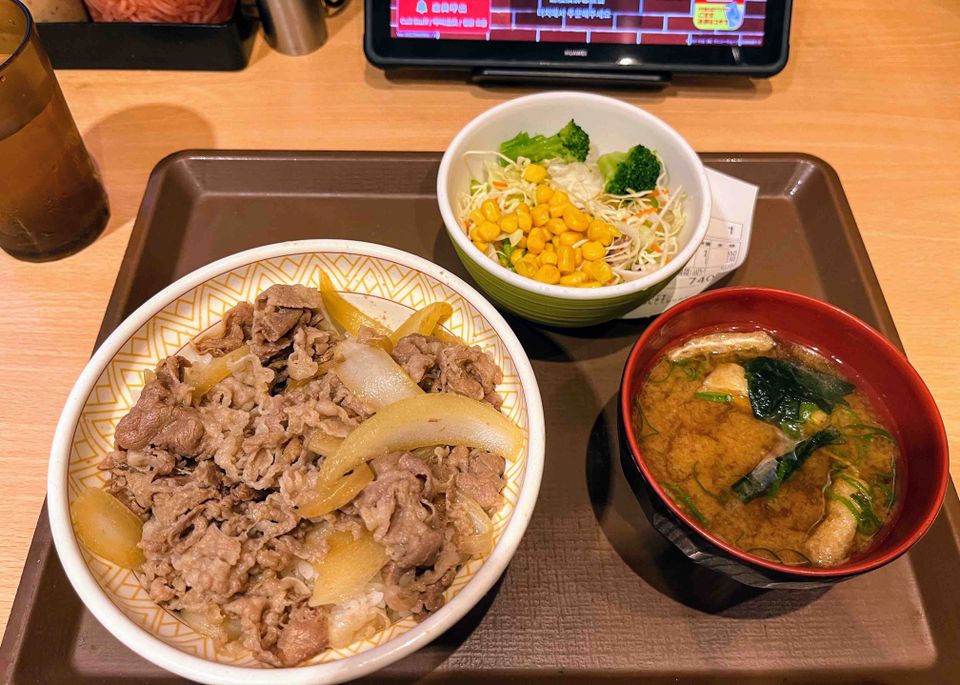
Two of the most famous foods of Japan are sushi and ramen. Some other well-known dishes include, tempura, miso soup, udon, soba, tonkatsu and curry. Have you heard of gyudon? I would guess that if you are not very familiar with Japanese food culture, or even those who are familiar with it may not be unaware of gyudon, 牛丼 or a beef bowl. (It does not sound that appetizing when you translate it into English.)
In relation to Japanese history, gyudon is fairly young as it is thought to have been invented around the 1890’s. That said, it is one of the most widely available foods in Japan. It is often found outside of train stations and busy heavily trafficked areas.
What exactly is gyudon?
Basically, gyudon is beef over rice or literally “beef bowl”, but that is not the most appealing translation. However, it makes sense when you breakdown the kanji:
牛: Cow/Beef
丼: Don (short for donburi which is basically something over rice in a bowl)
Like other don, which is a rice bowl, gyudon is rice topped with beef and onions simmered in sake and soy sauce. After doing some research on how some American restaurants have translated it, I have come across some better translations:
- Japanese simmered beef over rice
- Thinly sliced beef and onions are simmered in sake and soy sauce and topped over rice
- Gyudon: braised short rib, caramelized onion, onsen tamago, crispy onions, gari, scallion (this is a fancy take)
Another comparison of gyudon I have is that it is (in my humble opinion)…
What the hamburger is to the USA, gyudon is to Japan.
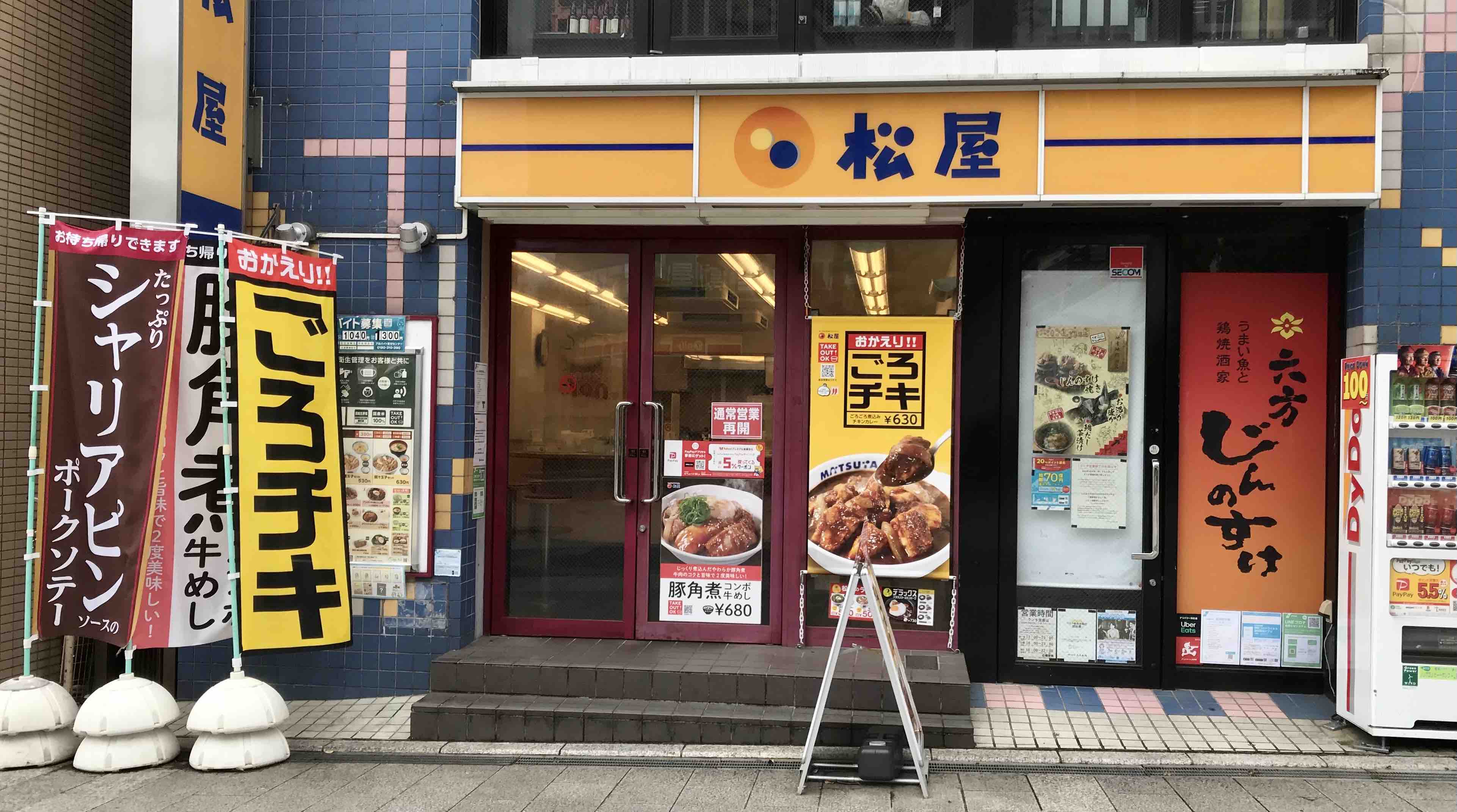
Matsuya, ranked third in number of gyudon stores
How Gyudon is similar to the Hamburger
For those who are familiar with the hamburger culture of the US, I would dare say that gyudon is similar to Japan.
Here are some similarities:
- There are multiple fast food chains (McDonalds, Burger King for Burgers in the US and Yoshinoya, Sukiya, and Matsuya for gyudon in Japan) that specialize in the same dish
- The main ingredient is beef
- There are many variations of the original dish (usually via toppings)
- The nutrition composition is somewhat similar to a McDonald’s Big Mac and fries (and they both have the image of being unhealthy)
- It can be considered a type of comfort food
Of course, there are other types of foods that could be considered to the hamburger of Japan, and I do not think gyudon is necessarily the best fit, but I do think that it comparable.
Let’s examine each bullet point.
1. There are multiple fast food chains (McDonalds, Burger King for Burgers in the US and Yoshinoya, Sukiya, and Matsuya for gyudon in Japan) that specialize in the same dish
There are three main gyudon chains in Japan. Yoshinoya, Matsuya, and Sukiya. In general they all can be found all around Japan. Likewise, the main burger chains in the US are McDonald’s, Burger King, and Wendy’s. (link)
2. The main ingredient is beef
This one speaks for itself.
3. There are many variations of the original dish (usually via toppings)
Just like people like to top burgers with bacon, avocado, mushroom and swiss cheese, people like to top gyudon with different things. Here is a quick survey conducted by the chain Yoshinoya, that asked people what their favorite toppings were. The top three are:
- Scallions and egg yolk
- Cheese
- Onsen egg
Other toppings inclue, pickles, natto, seaweed, and kimchi. (link)
4. The nutrition composition is somewhat similar to a McDonald’s Big Mac and fries (they both have the image of being unhealthy)

5. It can be considered a type of comfort food
The context of comfort is familiar and of “home” (see below section “Gyudon outside of Japan (kind of)”.)
The Gyudon chain landscape
If you look at the number chain restaurants in Japan, gyudon ranks near the top. In the category of “Japanese food” chain within chain restaurants, Gyudon is at the top and even beats out sushi (remember these are chains. I suspect it is likely there are more sushi places if you add non-chain restaurants.)
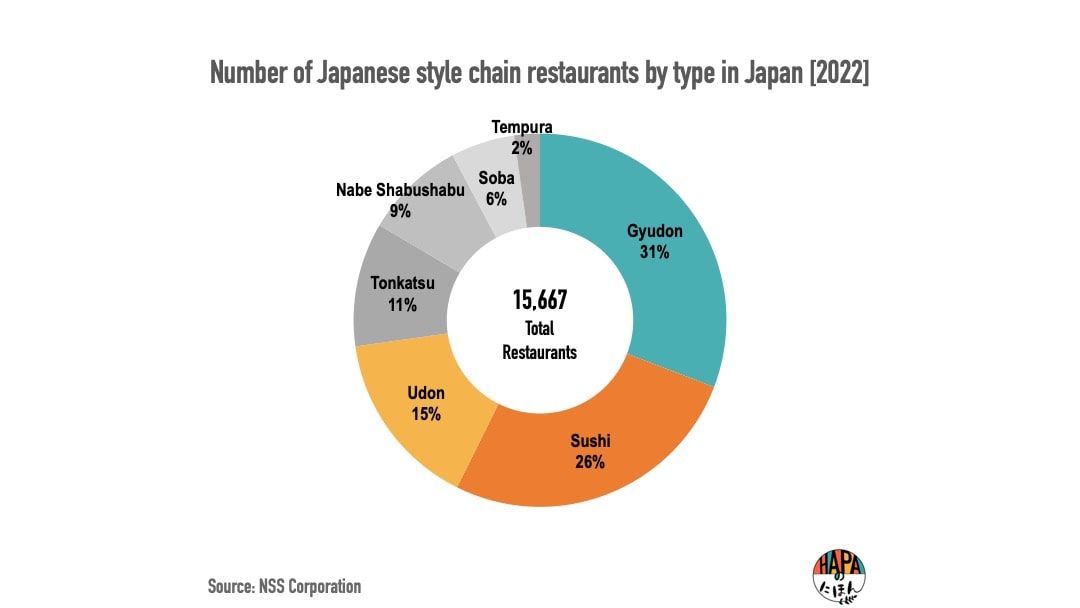
Therefore, I believe that Gyudon is the can be the hamburger of Japanese food (Perhaps it could be considered a hotdog.)
But for a real hamburger in Japan, hamburger chain stores win with a total 6,339 stores (2,934 or 46% is McDonald’s) in Japan. On the other hand there are only 4,828 gyudon chain stores. So, in the eyes of Japanese people, these do not seem like one to one substitutes, It would be interesting to do a national wide survey to see people’s feelings on gyudon vs a hamburger.
Link of numbers: https://www.nipponsoft.co.jp/blog/analysis/chain-restaurant2022/
The reputation of Gyudon in Japan
For the longest time and still now, Gyudon has the image of being a man’s food. In particular, the food of “Salary man” サラリーマン, or the term of office worker (men) in Japanese. Here in Japan, working hours are known to be long. In addition, the husband is almost always the bread winner in the family and provides for the family. (Wives and woman are expected to take care of the children and stay home. If they do work, it is usually a part-time position.) So gyudon became one of the meals that was associated with Salary-men since, it was a fast and quick meal for the busy office worker.
“I would eat it about twice a week. Always Yoshinoya.” – Salary man in his 50s
I asked him, if there was no Yoshinoya within close vicinity, if he would go out of his way to get to one. In response, he said, he would likely to go a different restaurant or maybe a different gyudon chain, but order something else (not gyudon.) "I always order the same thing. Gyudon nami (orginal size.) I like it because its the same flavor everytime. It's better than the other chains."
On the other hand, even now some woman feel uncomfortable going into a gyudon restaurant by themselves.
“I would have never gone into a gyudon restaurant when I was younger. Maybe in the last 10 years or so, I started to go. But it still has an image of a guy’s food.” – Woman in 40s
Recently, this image has been changing, but very slowly. You can see advertisements of woman eating gyudon. This is evidence that the gyudon chains are trying to change the perception of gyudon. To help with this effort, in 2019 Yoshinoya added the “small sized” gyudon to the menu, to appeal to the “woman, health-conscious, and older customers.” To give some context, there are usually at least 5 sizes of gyudon, normal, large, extra large, and extra extra large.
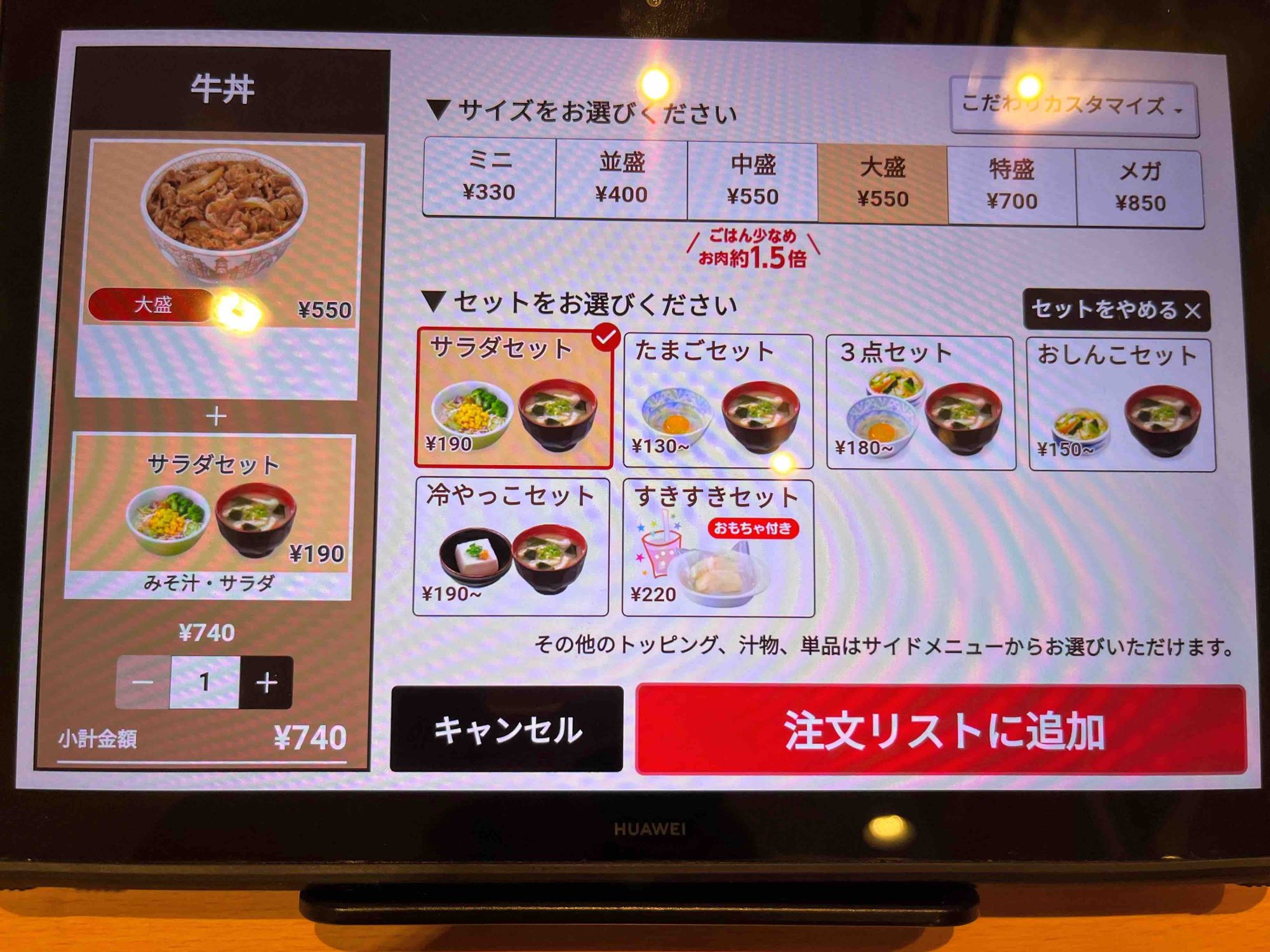
You can see the top row of the order tablet the size of the gyudon bowls to chose from, followed up set menu options (This tablet is from Sukiya)
Furthermore, to keep the menu fresh, the chains will release other menu items are a limited time, such as curries or sukiyaki.
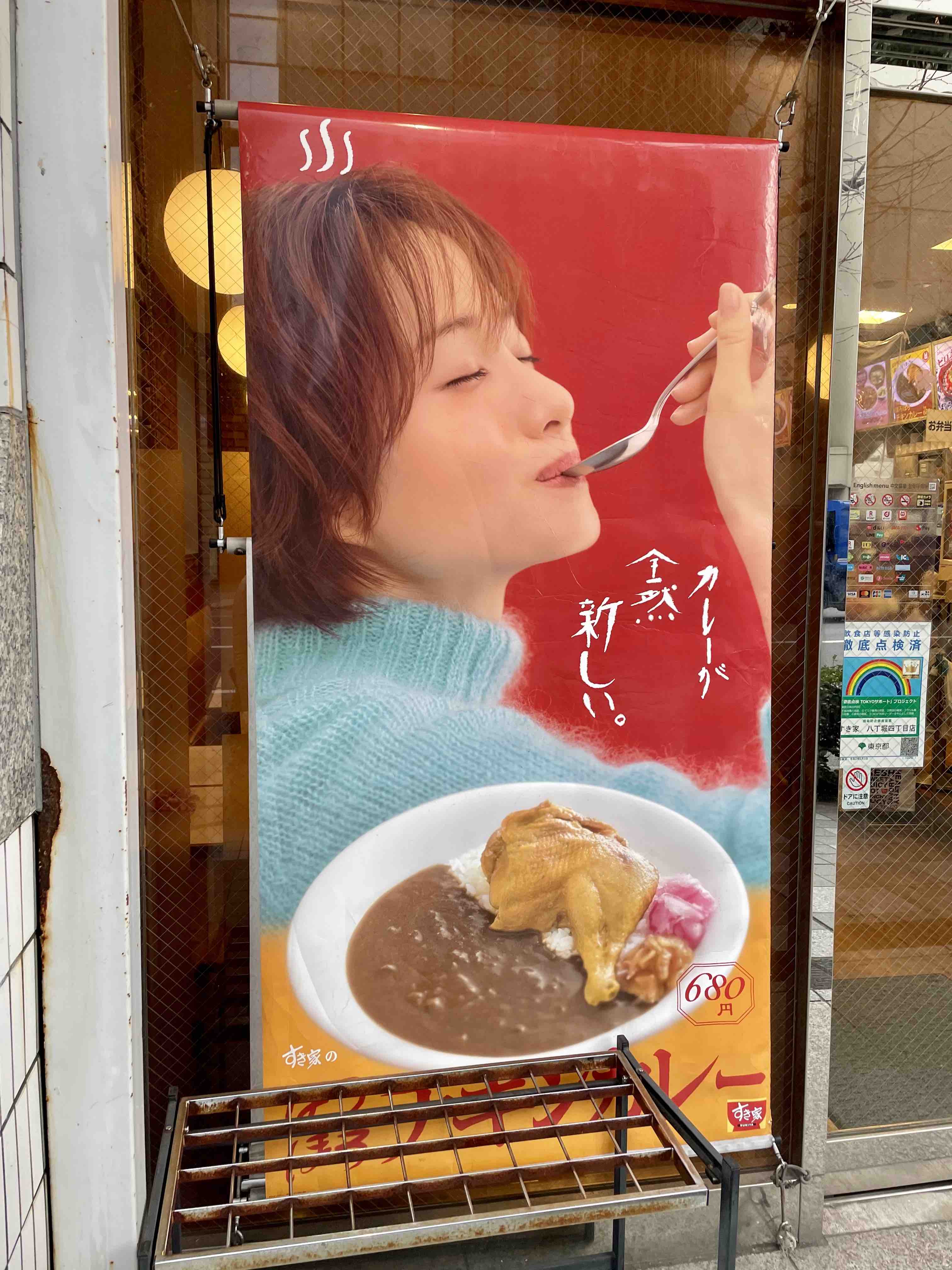
Sukiya restaurant advertising their curry with a woman
Gyudon outside of Japan (kind of)
On my flight to Japan with JAL, the “breakfast” meal was in fact, Yoshinoya’s gyudon. It was a nice surprise, as it was in a cute box with all of the yoshinoya branding. There was even benishoga (pickled ginger) and shichimitogarashi, (Japanese seven spice) two common toppings for gyudon. After landing, I asked explained to my family about how fun it was to get a box of yoshinoya gyudon on the plane. My uncle continued to explain that when Japanese people come back from overseas, they want to eat something familiar and they usually miss Japanese food –gyudon is one of those comforting foods. This made sense to me as some of the other famous Japanese dishes are especially hard to serve up in the air (ramen, sushi, karaage to name a few.)
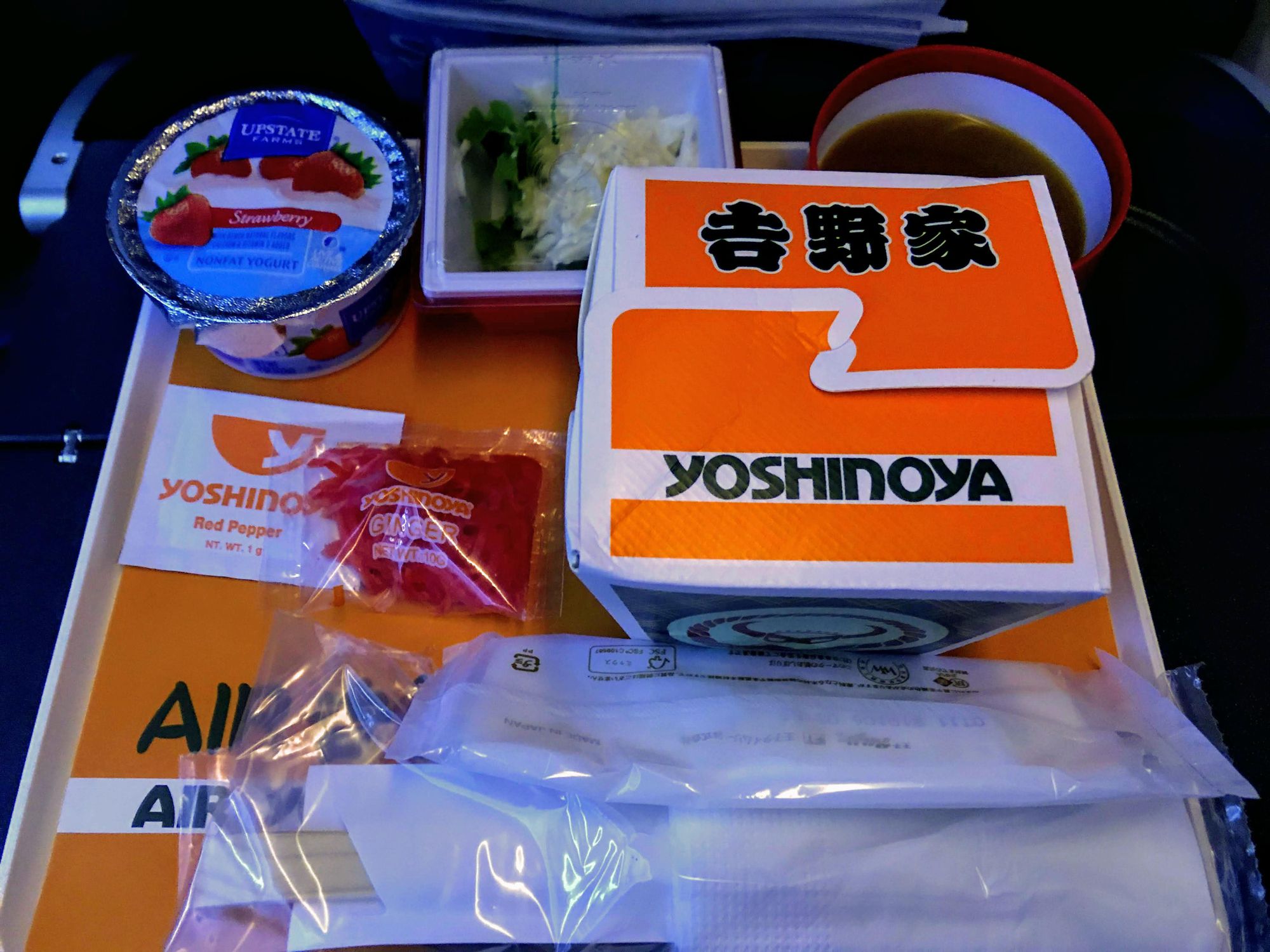
The best airline breakfast
Upon further research, JAL and Yoshinoya began this partnership in 2012, 10 years ago. The JAL CEO in an interview said, that “[the company] was aiming for novelty and authenticity. Yoshinoya gyudon is loved by the young and the old. JAL wants to be chosen for bringing the comfort and spirit of Japan to the people of the world.” (Apologies for my poor translation. Here is the link to the original interview.)
If you ever come to Japan, I encourage you to try gyudon and understand why it is loved by Japanese people.

